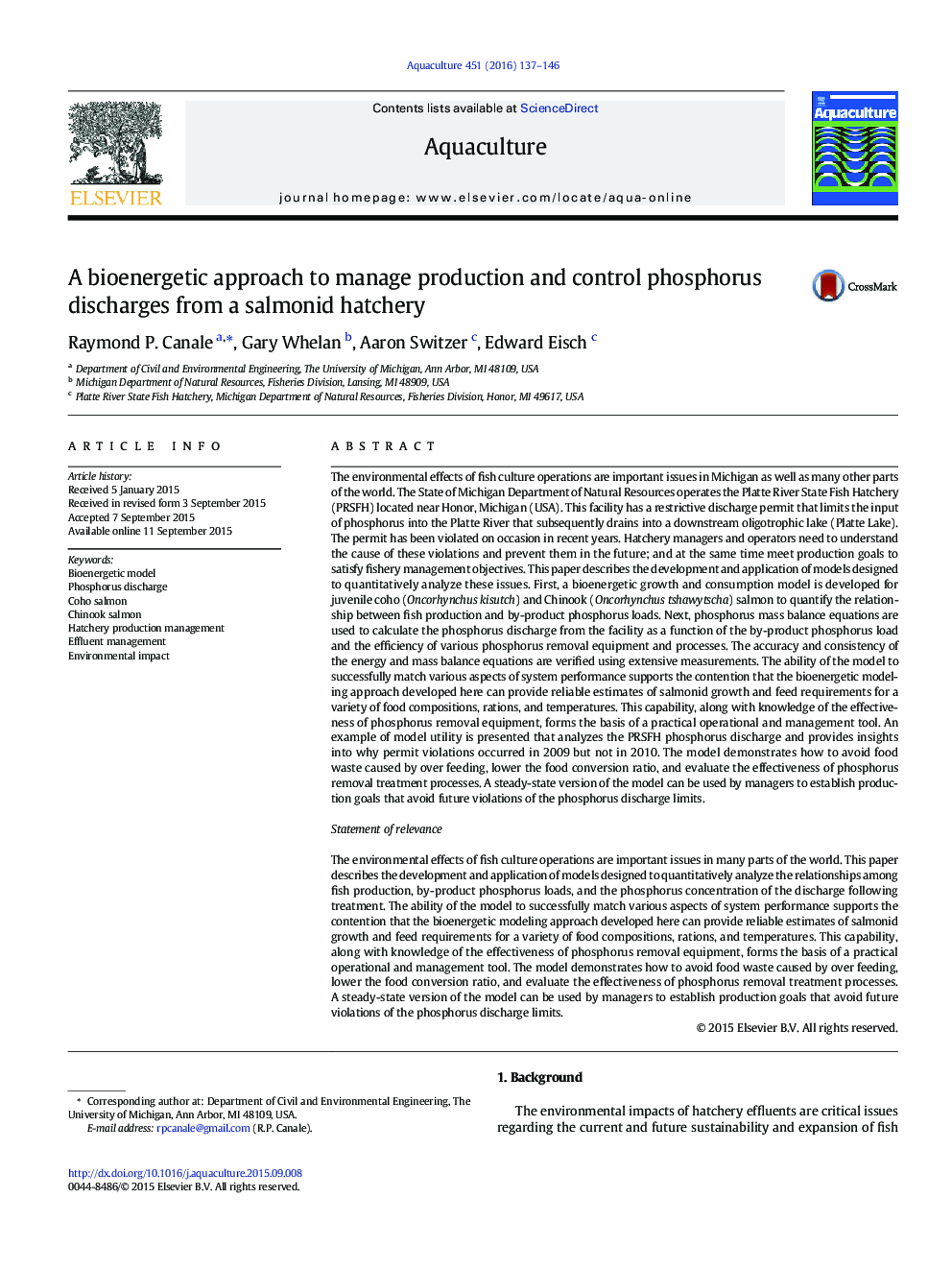| کد مقاله | کد نشریه | سال انتشار | مقاله انگلیسی | نسخه تمام متن |
|---|---|---|---|---|
| 8494209 | 1552836 | 2016 | 10 صفحه PDF | دانلود رایگان |
عنوان انگلیسی مقاله ISI
A bioenergetic approach to manage production and control phosphorus discharges from a salmonid hatchery
ترجمه فارسی عنوان
رویکرد بیوفرهنگی برای مدیریت تولید و کنترل تخلیه فسفر از یک پرورشگاه سالمونید
دانلود مقاله + سفارش ترجمه
دانلود مقاله ISI انگلیسی
رایگان برای ایرانیان
کلمات کلیدی
ترجمه چکیده
اثرات محیطی عملیات کشت ماهی در مسائل مهم در بسیاری از نقاط جهان است. این مقاله توسعه و کاربرد مدل های طراحی شده برای کمی تحلیلی روابط بین تولید ماهی، بارهای فسفر جانبی جانبی و غلظت فسفر پس از درمان را توصیف می کند. توانایی مدل برای موفقیت در برخورد با جنبه های مختلف عملکرد سیستم، حاکی از این است که رویکرد مدل سازی بیولوژیکی انرژی در اینجا می تواند برآوردهای قابل قبولی از رشد سالمونید و نیاز غذایی برای انواع ترکیبات غذایی، جیره ها و درجه حرارت ارائه دهد. این قابلیت، همراه با شناخت اثربخشی تجهیزات حذف فسفر، پایه ای از ابزار عملیاتی و مدیریت عملی را تشکیل می دهد. این مدل نشان می دهد که چگونه برای جلوگیری از زباله های مواد غذایی ناشی از بیش از تغذیه، کاهش نسبت تبدیل غذا، و بررسی اثربخشی فرایندهای حذف فسفر. نسخه های پایدار این مدل می تواند توسط مدیران مورد استفاده قرار گیرد تا اهداف تولیدی را که مانع نقض فصول تخلیه فسفر می شود، به کار گیرد.
موضوعات مرتبط
علوم زیستی و بیوفناوری
علوم کشاورزی و بیولوژیک
علوم آبزیان
چکیده انگلیسی
The environmental effects of fish culture operations are important issues in many parts of the world. This paper describes the development and application of models designed to quantitatively analyze the relationships among fish production, by-product phosphorus loads, and the phosphorus concentration of the discharge following treatment. The ability of the model to successfully match various aspects of system performance supports the contention that the bioenergetic modeling approach developed here can provide reliable estimates of salmonid growth and feed requirements for a variety of food compositions, rations, and temperatures. This capability, along with knowledge of the effectiveness of phosphorus removal equipment, forms the basis of a practical operational and management tool. The model demonstrates how to avoid food waste caused by over feeding, lower the food conversion ratio, and evaluate the effectiveness of phosphorus removal treatment processes. A steady-state version of the model can be used by managers to establish production goals that avoid future violations of the phosphorus discharge limits.
ناشر
Database: Elsevier - ScienceDirect (ساینس دایرکت)
Journal: Aquaculture - Volume 451, 20 January 2016, Pages 137-146
Journal: Aquaculture - Volume 451, 20 January 2016, Pages 137-146
نویسندگان
Raymond P. Canale, Gary Whelan, Aaron Switzer, Edward Eisch,
